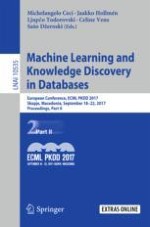2017 | OriginalPaper | Chapter
ALADIN: A New Approach for Drug–Target Interaction Prediction
Authors : Krisztian Buza, Ladislav Peska
Published in: Machine Learning and Knowledge Discovery in Databases
Publisher: Springer International Publishing
Activate our intelligent search to find suitable subject content or patents.
Select sections of text to find matching patents with Artificial Intelligence. powered by
Select sections of text to find additional relevant content using AI-assisted search. powered by
Abstract
 technique (ALADIN) is evaluated on publicly available real-world drug–target interaction datasets. The results show that our approach statistically significantly outperforms BLM-NII, a recent version of BLM, as well as NetLapRLS and WNN-GIP.
technique (ALADIN) is evaluated on publicly available real-world drug–target interaction datasets. The results show that our approach statistically significantly outperforms BLM-NII, a recent version of BLM, as well as NetLapRLS and WNN-GIP.